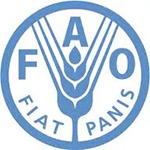Improving Recycling Rates in an Office Setting
HIGHLIGHTS
- Recycling is a critical strategy to optimize resource efficiency and has valuable benefits for the natural environment and global climate.
- We partnered with the Food and Agriculture Organization of the United Nations (FAO) to better understand the behavioral barriers to correct waste sorting at its headquarters in Rome and implemented new designs to test their impact.
- Participants who viewed the behaviorally informed signage correctly sorted nearly twice as many items as the control group (78% increase).
The Challenge
Recycling is a critical strategy to optimize resource efficiency and has valuable benefits for the natural environment and global climate. While technological advances have transformed our ability to reuse raw materials, individual-level behavior remains an essential component to unlock the benefits recycling has to offer.
We partnered with the Food and Agriculture Organization of the United Nations (FAO) to improve waste diversion rates at its headquarters in Rome. Despite a commitment to recycling and sustainable operations, roughly 50% of waste items at the office were being disposed of improperly by staff (i.e., placed in the incorrect waste bin), representing thousands of pounds of waste that could have been diverted from landfill.
Our Approach
We supported FAO to design and implement a waste audit to establish baseline levels of recycling contamination. Having established a baseline, we then conducted a behavioral audit—consisting of a literature review, a review of existing infrastructure (waste station design and communications campaigns), and in-depth interviews with FAO staff—to better understand the behavioral barriers to correct waste sorting.
Building on the identified barriers, we redesigned the signage on and around waste bins and evaluated their impact on recycling decisions during a two-week online randomized controlled trial.
Results
In the online experiment, participants viewed either the old signage (control) or the new, behaviorally informed signage (treatment) and then were asked to virtually sort 13 waste items. Participants who viewed the behaviorally informed signage correctly sorted nearly twice as many items as the control group (78% increase).
Of the 13 items that participants were asked to sort, the treatment group was more likely to correctly sort 12 of the 13 items. The treatment group also found the waste sorting activity easier than the control group. All results were statistically significant (p<.05).
Takeaway
Our results demonstrate the potential impact of behaviorally designed signage, as well as the value of utilizing a light-touch, low-cost online experiment to refine and validate new designs. The designs and development process could be replicated in other contexts to achieve sustainability outcomes across FAO’s operations.
Interested in learning more about this work applying behavioral science to a crucial social problem? Reach out to us at info@ideas42.org or tweet at @ideas42 to join the conversation.
Partners










